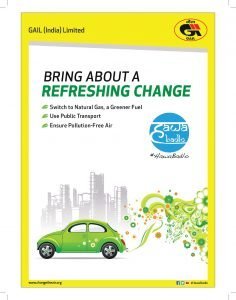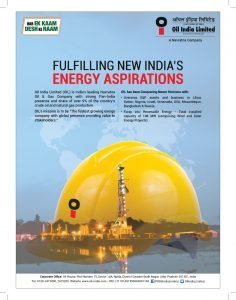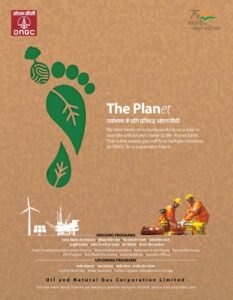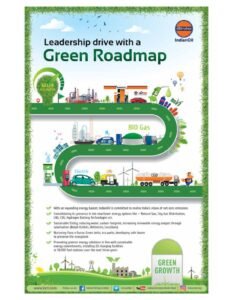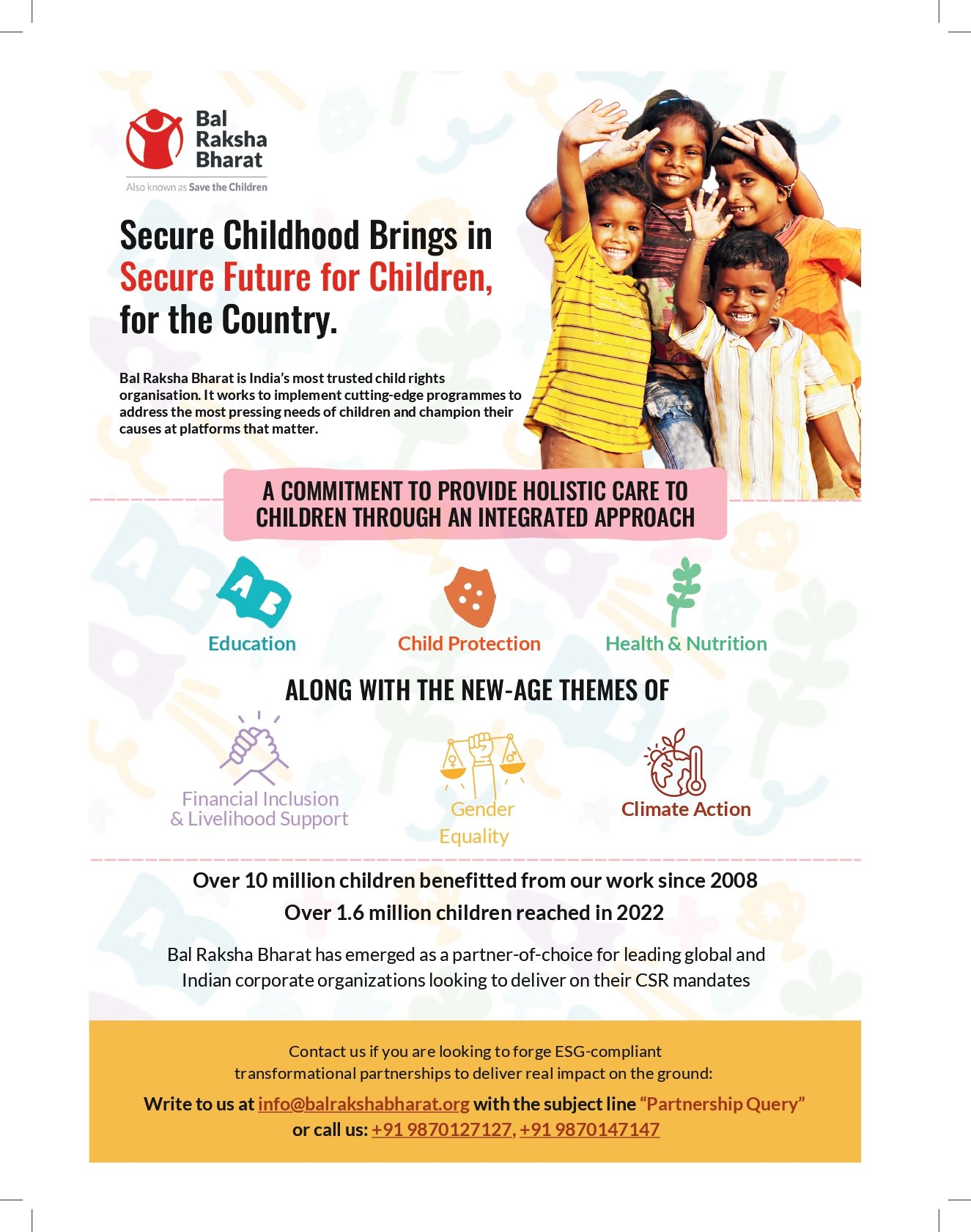
With the accent on a clean India and a cleaner environment, understanding pollution and its global impact assumes a deep significance. Quite simply put, the introduction of harmful materials into the environment is broadly termed as pollutants. One example of natural pollutants over which we have no or limited control would be volcanic ash. The detrimental ones for the environment, however, are the ones created by human activity, and this is what has assumed alarming proportions not only in India but globally and this need concentrated and prompt remedial measures.
Pollutants damage the air quality, water, and land. The most common man-made pollution results from industries, the garbage generated at home, burning coal, sewage, pesticides, cars, and other vehicles, and a host of other things. All living creatures on this planet from one-celled microbe to blue whales rely on the supply of air and water that are available on planet Earth and when any of these resources are polluted all living beings or forms of life on the planet are threatened.
Pollution is a hazard that is not unique to a particular country or region but assumes a mammoth and global proportion. It is a known fact though, that the urban areas are more polluted than the countryside or the rural areas and villages. Pollution is a global problem.
Although urban areas are usually more polluted than the countryside, pollution can spread to remote places where no people live. Quite alarmingly though, chemicals and pesticides have been found in the Antarctic ice sheet as well, a huge collection of microscopic plastic particles is found in the middle of the northern Pacific Ocean and is termed the Great Pacific Garbage Patch. Sea and water pollution is also caused by ocean currents and migrating fish that carry marine pollutants over long distances. The air and water currents too cause pollution. Smoke and radioactive material from one country to another can also drift and scatter in other places, that are not restricted to the polluting country.
Let us now cast a cursory glance at the three major types of pollution: air, water, and land.
Air Pollution
Air pollution is often visible but dangerously enough, it is also invisible. The dark smoke from vehicular traffic or Industrial chimneys and households can be seen more often than not. This hurts the eyes, lungs, and general well-being of an individual. This is a trigger for many diseases. In India, one can never forget the 1984 Bhopal Gas tragedy when the deadly gas released into the air killed more than 8,000 people within days. A large number were permanently injured and harmed.
In the latest World Air Quality Report 2a023 published by IQAir, the capital city of India, Delhi ranks fourth in the list of the most polluted Asian cities. It follows Chaing Mai in Thailand, Kathmandu in Nepal, and Shenyang in China, which according to the IQAir report are the three most polluted cities in the world. The city that follows Delhi according to the 2023 report is Incheon (South Korea). This report is published every year and ranks the world’s most polluted cities. Unfortunately, enough, none of the cities in India meet the guidelines set by WHO. Many Indian cities therefore are regulars on this list every year. The worst air quality according to the World Air Quality Report has been experienced by India and Pakistan.
Burning fossil fuels like coal, oil, and natural gas cause a lot of manmade pollution. Carbon monoxide a colorless, odorless gas is produced when gasoline is burned to power trucks and cars. This gas is harmful in large concentrations and amounts. Highly concentrated carbon monoxide is produced by traffic in the cities.
Urbanization has resulted in the setting up of factories that produce common pollutants, namely – sulfur dioxide, nitrogen oxide, and hydrocarbons. These, in turn, react with sunlight to produce smog, which is a thick fog or haze that contributes to serious and hazardous air pollution. The color of smog depending on the type of pollutants can be brown or greyish blue.
Smog results in breathing issues and other health risks. Governments in cities like Hong Kong that suffer from smog air pollution issue warnings to inform people not to step out when the smog is very thick. Air pollutants mixed with moisture convert into acids and fall on earth as acid rain. Winds can carry this acid rain to very far away distances too. Acid rains cause damage to trees in a forest and kill them. It devastates lakes and other sources of water. This results in the killing of marine life too. It causes erosion on marble and other stones too. Acid rain despite the efforts of various governments in various countries to limit it, remains a nagging problem in Asia and the developing world.
Greenhouse gases like carbon dioxide and methane occurring naturally in the atmosphere are another source of air pollution. They are essential for life on Earth, as they create the greenhouse effect by trapping the heat in the atmosphere and keeping the Earth warm for people to live comfortably. The burning of fossil fuels and the burning of forests has increased the amount of greenhouse gases in the atmosphere though. The average temperatures all across the globe have been rising, with the decade beginning in the year 2000 being the warmest, resulting in the coining of Global warming. This causes glaciers and ice sheets to melt. Sea levels have recorded a rise at the rate of two millimeters per year. Ocean acidification or the process of ocean waters absorbing more carbon dioxide from the atmosphere has also emerged. As per the prediction of scientists global warming will increase storms of severe intensity. It can also bring droughts and floods in some regions. The natural habitats of plants and animals are shrinking. Another damaging effect that has occurred is the shrinking of the ozone layer, as a result of which people are facing the being exposed to ultraviolet radiation and the resulting harmful effects of skin diseases and cancer amongst other ill effects.
Air pollution accounts for one of the most severe contributors to environmental damage. The World Health Organization (WHO) has according to an estimate released a figure of seven million people worldwide who are killed due to air pollution. It also shows that 9 out of 10 people breathe air that does not adhere to the WHO guidelines that limit the pollutants to a certain level.
If ever there was a contradiction of nature to be cited it would be during the COVID-19 pandemic, although air pollution accounted largely accounted for the airborne virus entering our body, and causing severe bouts of illness, the same air pollution reduced drastically due to the lockdowns initiated during that period. With minimal to absolutely no CO2 emissions from human activities went about bringing a huge improvement in the air quality index. The International Energy Agency has estimated that the average activity on the roads all across the world lessened by almost 50 % during the pandemic.
The improvement in air quality was visible and clear to see. Citing an example from India numerous before and after images of the Delhi smog have been released showing the stark difference and the clearer air quality post-lockdown. Urban areas were quick to record massive reductions in a wide range of pollutants that were associated with internal combustion engines. Data released by the UK’s National Centre for Atmospheric Science showed very distinct reductions in nitrogen dioxide (NO2) and particulate matter (PM2.5) covering 10 cities selected for sample study.
The lockdown also came as a ray of hope where mankind understood the efficacy of prompt and joint action that could positively impact the environment. The burning of fossil fuels and its detrimental impact was clear for all to see post its reduction and minimization. However, as a flip side, other contradictory reports claimed that even the pandemic-induced lockdown could not do much for the stubborn global air pollution. South Asia which is bracketed as the world’s most polluted region recorded a continuous rise in pollution levels. Pakistan recorded a rise in its’ PM 2.5 levels, and Bangladesh too. Some parts of Southeast Asia however saw a decline in pollution during the lockdown as compared to the previous year. Particulate pollution declined in Singapore, Indonesia, and Malaysia declined considerably. During the lockdowns, the environmentalists were quick to call for the environmental benefits to be maintained and urged people to focus on the low emission, path to sustainability that was essential for economic growth too. Unfortunately, though business has once again assumed priority regardless of its impact on the environment for most companies post the pandemic if some of the crucial data available is to be gleaned through.
Water Pollution
Polluted water that is foul smelling and garbage ridden, filled with harmful chemicals is very harmful. This water is neither safe for swimming or drinking. It poses a huge risk to marine life as well. According to an estimate made by The United Nations, 4,000 children die daily due to the consumption of dirty water. The indirect effect of polluted water also occurs when people eat fish that live in polluted waters. The other sources of water pollution are oil and natural gas that leak into the lakes and oceans.
Human beings release chemicals and oils from factories into the waters and cause pollution. These are toxic to aquatic life. Mining and drilling activities also create water pollution. A major contributor to the pollution of rivers and streams near coal mines is AMD or Acid Mine drainage. Rivers polluted by AMD are a hazardous source for hygiene and drinking. The other sources of water pollution are known to be oil spills, buried chemical waste, radioactive waste can cause great harm to living beings and marine life -consisting of plants and aquatic life. Untreated sewage is also a common source of pollution. Delhi the capital of India, ranks high in water pollution since half of the sewage and other waste produced in the city are dumped into the river Yamuna. Fertilizers and pesticides are used in agriculture to add to water pollution. Simple garbage dumping too results in water pollution making it unhygienic and undrinkable. Aquatic animals eat plastic assuming it for food and are killed. Toxins absorbed by the fish that people eat can make them very ill and may result in death too. Plastic that is dumped in the ocean pollutes the ocean beds. Chemical pollutants cover the plastic that is disposed of posing a double hazard and very high risk of pollution.
In a recent 2023 report of the Central Pollution Control Board (CPCB), the five most polluted rivers in India are – Ganga, Yamuna, Godavari, Ghaggar, and Gomti.
Land Pollution
Most of the pollutants that cause harm to the water are also causing harm to the land. Pesticides and fertilizers that are blown by the wind from agricultural fields cause harm. Plants, animals, and sometimes people too are harmed. Some of the fruits and vegetables absorb the pesticides that help them and when people consume the fruits and vegetables, the pesticides enter their bodies. Some pesticides can cause cancer and other diseases.
Paper cans, glass jars, plastic products, etc. also mar the landscape. Littering is hazardous and results in unhygienic conditions coupled with health hazards.
Dangerous pollutants like oils, ink, and chemicals present in garbage harm plants, soil, animals, and people. Garbage collection that is inefficiently done contributes to landfills. Pollutants that are buried in landfills, leak into the earth and contaminate plants and the herbivores that consume them. The process of bioaccumulation also occurs which is harmful. Dumped trash is harmful and causes adverse effects on the land as well as the ocean. The process of incinerating trash that is adopted by various cities although eliminates trash by burning, releases dangerous heavy metals and chemicals in the air which are again very harmful. Ironically enough this system of eliminating land pollution results in air pollution.
A report released by The Centre for Science and Environment (CSE) “State of India’s Environment 2022”, reveals that nearly 62% of land in Delhi was under degradation. It further goes on to mention that nearly 30% of India’s geographical area is under degradation.
Although various initiatives are being taken at individual, corporate, and government levels to combat pollution, this challenge is deadlier than the pandemic and is continuing unabated. Efforts must be stepped up to ensure that we jointly fight out this pandemic which looms large on the global horizon and is easily on the verge of engulfing the entire world!














